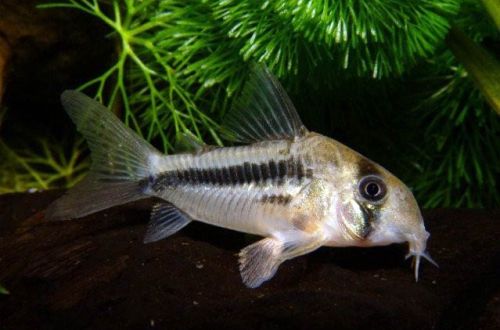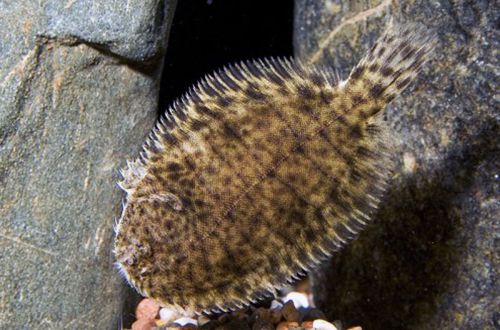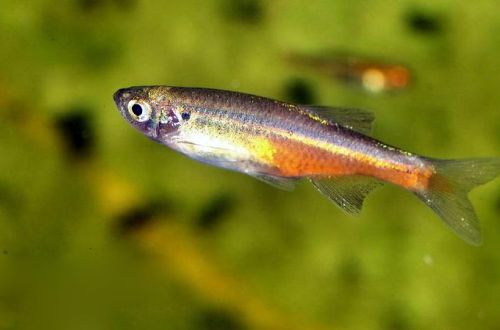
Green Panhax
Block’s Aplocheilus or Green Panhax, scientific name Aplocheilus blockii, belongs to the Aplocheilidae family. Easy to keep and unpretentious fish, it feels great in the general aquarium. Breeding at home also does not cause problems. This set of qualities makes this species an excellent candidate for the role of the first fish of a novice aquarist.

Habitat
It comes from the reservoirs of Sri Lanka and southern India. There is information about being in Pakistan and in some mountainous regions of Hindustan, but they may be erroneous. They live in lowlands, often in coastal areas with stagnant or slowly flowing water, including brackish water, with rich floating vegetation, such as mangrove swamps and rice fields.
Description
A miniature beautiful fish with a slightly elongated body, reminiscent of the shape of an ordinary European pike, so sometimes these fish are called “Asian pike”. The fins are significantly shifted towards the tail, which gives the swift appearance of a small predator. The color is gray, but decorated with numerous bright greenish specks.
Food
Carnivorous species, prey on aquatic and terrestrial invertebrates from the surface. In a home aquarium, small live or frozen foods such as brine shrimp, daphnia, bloodworms, etc. may be offered on a regular basis.
Maintenance and care
General freshwater aquarium, a tank of 40 liters is suitable for a pair of fish. The design should use a soft substrate of coarse sand or very small pebbles. Plants are small-leaved, forming dense thickets, for example, Javanese moss, Riccia and the like. Floating plants are a must.
The recommended composition of water is in a wide range of hardness, the pH is in the region of a neutral and slightly alkaline mark. Read more about dGH and pH parameters in the “Hydrochemical composition of water” section. A small concentration of salt is acceptable, 2-3 teaspoons without a slide per 10 liters, but keep in mind that salt can be harmful to other inhabitants.
A set of minimum necessary equipment consists of a filter, aerator, heater and lighting system. When placing and setting up instruments, learn that the Green Panhax does not tolerate strong currents, optimal conditions are in still or slowly flowing water.
Breeding / breeding
Spawning can start at any time. Females lay their eggs in any thicket of plants, depending on what is available. It is for these purposes that their dense thickets are located in the aquarium. The incubation period lasts only 10-15 days. At first, feed with ciliates, as they grow, you can feed Artemia nauplii, microworms, etc. It is advisable to transplant fry into a separate tank with similar water conditions so that they themselves do not become an additional source of food for other inhabitants.





